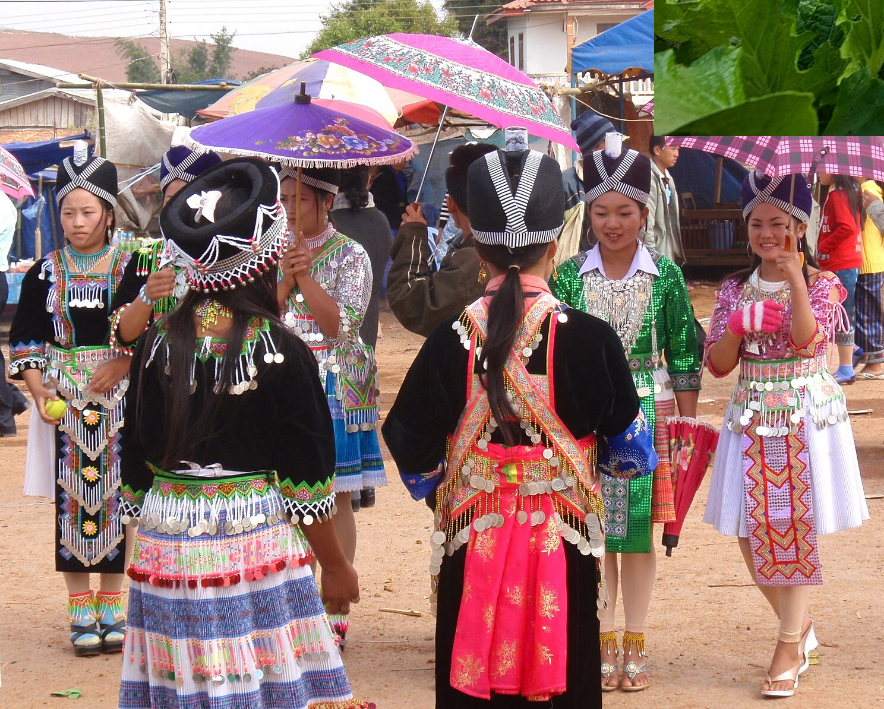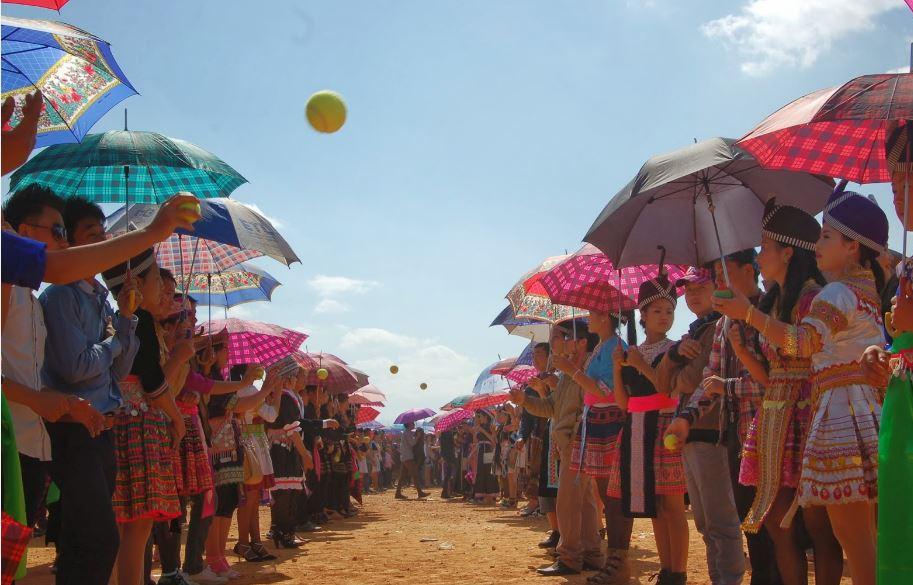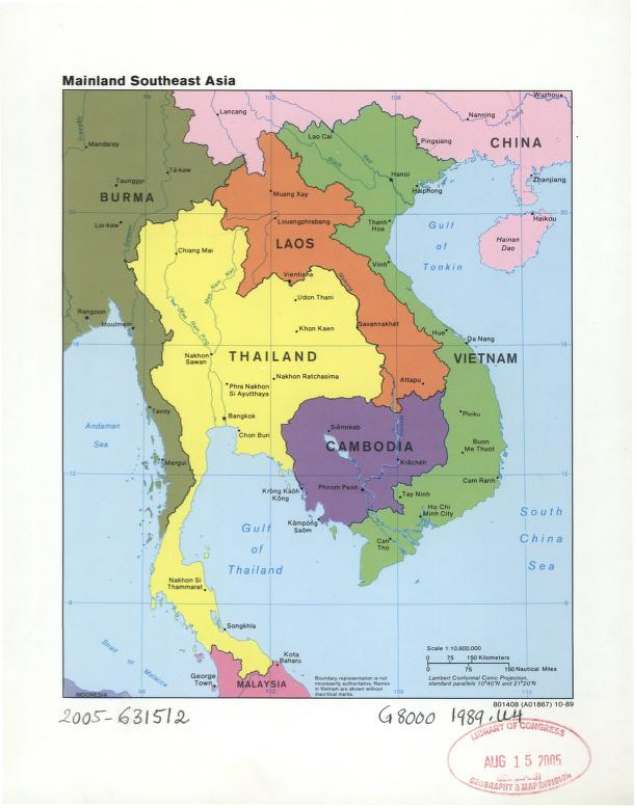Children play a ball tossing game called pov pob to celebrate the Hmong New Year
Grade: K-3Subject:
English Language Arts, U.S. History, Social Studies
Number of Activities: 3
For many Hmong Americans, celebrating the Hmong New Year is an important way to preserve Hmong culture by passing down traditions from one generation to the next. In this lesson, students will read a passage about the Hmong New Year and identify the main idea and key details in the text.
Students will:
- Describe how Hmong Americans celebrate the Hmong New Year.
- Identify the main idea and key details of a text.
- Compare and contrast the craft and structure of two videos featuring Hmong New Year celebrations in the United States.
Hmong New Year is an important
holiday for Hmong people. It is a
celebration. People see old friends. They meet new people.
Most Hmong Americans are from Laos. Laos is a country in Southeast Asia. Many came to the United States as
refugees. They were escaping danger.
The Hmong New Year is celebrated in the fall. It usually takes place in November or December. This time marks the end of the
harvest season. It is a time to rest. Celebrations can last a few days. Some can last a few weeks.
For many Hmong Americans, New Year is a spiritual holiday. They connect with
spirits. They give thanks to their
ancestors. They ask for blessings for the upcoming year.
Many cities have
public Hmong New Year
festivals. These festivals have dancing and singing. They have games. One Hmong tradition is to play
pov pob. It is a ball-tossing game. Later, festivals added
competitions too.
Some Hmong wear special clothes for the New Year. These outfits have bright colors. Some have special patterns
embroidered on. These patterns can tell a story.
Food plays a large part. Common dishes are shared together. They include rice and different kinds of meat, especially chicken.
In Laos, villages would host their celebrations on different weeks. One village would host a celebration one week. A neighboring village would host theirs another week. This was so villagers could attend each other’s celebrations. This way, they met new people. They were also able to reunite with people who may have married into other families.
In the United States, there are cities with large Hmong American communities. These cities include St. Paul in Minnesota and Fresno in California. These cities host their celebrations on different weeks. For example, St. Paul hosts a celebration in November. Fresno hosts the last celebration which usually takes place in December. Fresno hosts the largest Hmong New Year festival in the country. It lasts for 4 days. Some people travel to festivals in different cities or states.
Hmong New Year is a time to gather with family. It is a time to pass on
traditions. As such, Hmong Americans are
preserving their cultures and history.
Bibliography:
- Ancestor: family members who have died
- Celebration: a special event or day, with festivities
- Competition: an event or act of trying to gain or win something against others
- Embroidered: decorative designs made with sewing or needlework
- Festival: a special day or period with its own activities, food, or ceremonies
- Harvest: gathering crops
- Holiday: a day marked to remember or celebrate an event
- Preserve: to keep alive or intact
- Public: open to all
- Refugee: a person who flees to another country to escape danger
- Spirit: a supernatural being; the parts of a person outside their physical body
- Tradition: the handing down of information, beliefs, or customs
- What is the significance of the Hmong New Year?
- From where are most Hmong Americans?
- When is Hmong New Year celebrated? Why is it celebrated during this time of year?
- What are some things that happen at Hmong New Year festivals?
- How does celebrating the Hmong New Year help Hmong Americans connect with their culture?
Map of Southeast Asia. The Hmong live in China and northern regions of Vietnam, Laos, Thailand and Burma (present-day Myanmar).
Credit: United States Central Intelligence Agency, Library of Congress, Geography and Map Division
Activity 1: Examining Different New Year Celebrations
- Distribute the worksheet entitled, “My Favorite Holiday.” Have students draw a picture of their favorite holiday and have them complete this sentence frame: “My favorite holiday is _____. I love it because _____.”
- Have students share their responses. Facilitate a discussion by asking students the following questions:
- What do holidays share in common?
- What makes holidays different?
- Why do people like celebrating holidays?
- Why is celebrating holidays important?
- Tell students that celebrating the New Year is a popular tradition in the United States. Ask students the following question: "How does your family celebrate the New Year?" Give students time to share aloud. Record their comments on chart paper.
- Ask students the following question: “What are some examples of different New Years celebrated by different communities in the United States?” Offer some examples (i.e., Chinese New Year, Tet, Seollal, Nowruz, Songkran, Rosh Hashanah, etc.). Explain that the Hmong community celebrates the Hmong New Year.
- Tell students that Hmong people have roots in East Asia and Southeast Asia and that most Hmong Americans came from Laos or Thailand. Show these countries on a map.

Children often wear traditional clothing to celebrate the Hmong New Year.
Credit: John Pavelka,
CC BY 2.0, via Wikimedia Commons
Activity 2: Learning About Hmong New Year
- Have students read the essay. Consider the following options:
- OPTION 1: Create a slide deck with the essay content and add visuals. Read aloud to the students.
- OPTION 2: Write each section on large chart paper. As you read each section aloud, draw visuals in collaboration with the students.
- Facilitate a class discussion by asking students the Discussion Questions.
- Have students complete the worksheet entitled, “Bubble Map: Main Idea and Key Details” about the Hmong New Year based on the essay.
- Have students identify the main topic of the essay, which is “Hmong New Year,” in the center bubble.
- Have students identify key details of the text, including how and when it is celebrated, in the surrounding bubbles.
Activity 3: Comparing Videos about the Hmong New Year
- Have students watch the following videos:
- Hmong Cultural New Year Celebration in Fresno, California: “Fresno Hmong New Year 2021-2022 | Recap highlight Video” (Run time: 4:09)
- Minnesota Hmong New Year in St. Paul, Minnesota: “Minnesota’s Hmong population held their annual New Year’s celebrationo” (Run time: 2:02)
- Have students complete the worksheet entitled, “Five Senses.”
- Have students write or draw what they can see and hear based on the video in the first two rows.
- Have students imagine that they are at the celebration. Have students write or draw what they imagine they can smell, taste, and feel based on the video in the last three rows.
- Facilitate a discussion by asking the following questions:
- How did you feel after watching each video?
- What did you learn from the videos?
- How did the videos add to or build on the essay?
- Was there anything in the videos that was not in the essay?
- Was there anything in the essay that was not in the videos?
- What did you learn from being able to see the celebrations in the videos?
- What did you learn from being able to hear the celebrations in the videos?
- What items from the videos would you be able to smell, taste, and feel if you attended the events in person?
- Tell students the following about the creator of each video: “The Fresno video was created by SJYangProduction, a video content creator. That means their job is to create videos. They are skilled at producing videos, which includes coming up with ideas, filming video, editing, adding music, and more. The St. Paul video was created by WCCO News and CBS News Minnesota. They are a news company. Their job is to tell people about news and events.”
- Facilitate a discussion about the craft and structure of the two videos by asking the following questions: Have students complete the worksheet entitled, “Craft and Structure Comparison” by responding to the following questions:
- What audio is featured in the video and why? (ie. interviews, music, footage from the event)
- What visuals are featured in the video and why? (ie. interviews, photos, footage from the event)
- What do you think the video creator’s purpose was in making the video?
- Who was their intended audience?
- What did you find effective about each video?
- What did you find ineffective?
- Ask students which video they found more effective in showcasing a Hmong New Year celebration. Have students share at least two reasons they found it effective. If needed, have students use the sentence starter, “I liked the ___ video because ____.”
- Have students create a poster promoting the video they found more effective.
- Show the video entitled, “Pov Pob: Hmong New Year Ball Toss Tradition.” Have students play the game by tossing a ball back and forth and asking each other questions.
- Tell students that Hmong New Year is a time to give thanks to ancestors. Have students learn about one of their ancestors and write them a thank-you note.
- Tell students that Hmong New Year is a time to express gratitude for the harvest. Have students write and draw about at least three things they are thankful for.
- Have students read (or read aloud) the essay in The Asian American Education Project lesson entitled, “The First Lunar New Year Celebration in the United States.” Have students complete a venn diagram comparing Lunar New Year and Hmong New Year.
- Have students research ways in Hmong New Year celebrations have been altered in order to accommodate life in the United States.
- Have students research and draw a picture of one part of a Hmong New Year celebration (ie., dance, clothes, games, food). Have students write a description for their picture.
- Have students look for posters and other promotional materials for past celebrations. Have students design their own poster for a Hmong New Year celebration.
CCSS.ELA-LITERACY.RI.K.2
With prompting and support, identify the main topic and retell key details of a text.
CCSS.ELA-LITERACY.RI.K.9
With prompting and support, identify basic similarities in and differences between two texts on the same topic (e.g., in illustrations, descriptions, or procedures).
CCSS.ELA-LITERACY.RI.3.2
Determine the main idea of a text; recount the key details and explain how they support the main idea.
CCSS.ELA-LITERACY.RI.3.9
Compare and contrast the most important points and key details presented in two texts on the same topic.




